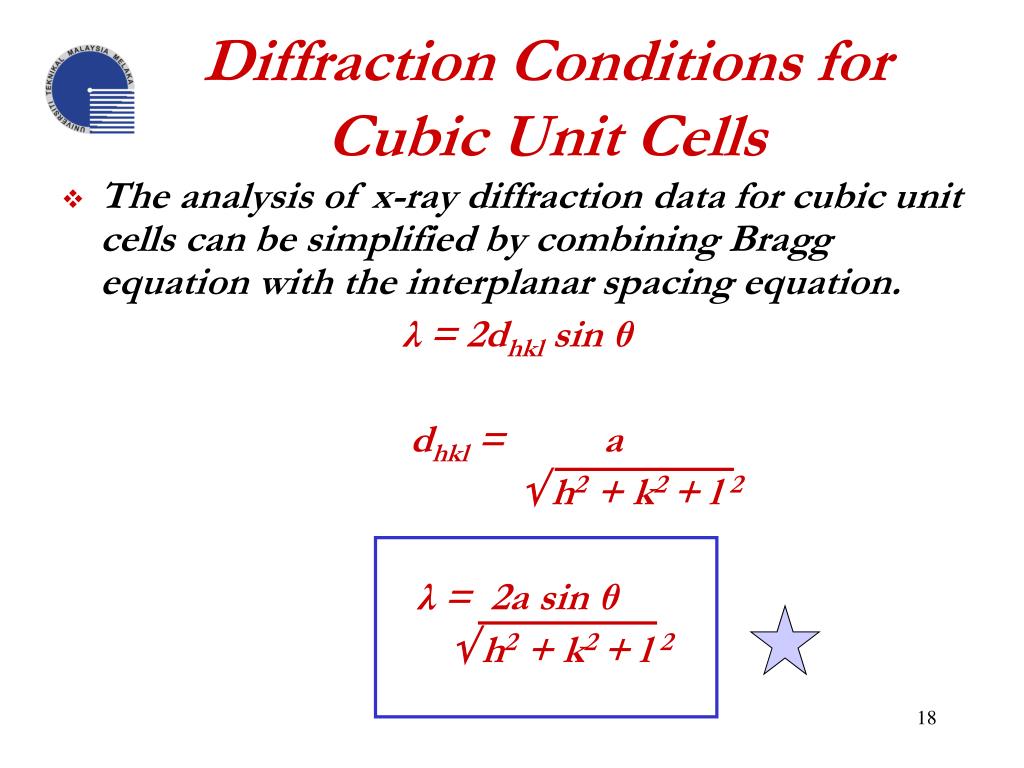

Using iterative reconstruction methods in conjunction with DCT methods, excellent resolution of the grain shapes can be achieved at the cost of strain resolution (Nervo et al., 2014 ▸).

Another branch of 3DXRD is diffraction contrast tomography (DCT) (Ludwig et al., 2009 ▸), where the detector is placed close to the sample such that the projection of individual grain shapes can be seen in the recorded diffraction image.
#Xray diffraction equations full#
These methods allow for the study of intragranular effects (Hayashi et al., 2017 ▸ Hektor et al., 2019 ▸ Henningsson et al., 2020 ▸) at the cost of having to scan the sample across the narrow beam to collect the full diffraction signal. 3DXRD geometries using a narrow beam cross section, smaller than the grain diameter, are often referred to as scanning-3DXRD (Hayashi et al., 2015 ▸). The beam cross section and angular step size in 3DXRD must be selected such that a limited number of grains are illuminated during detector readout, limiting spot overlap and revealing the individual diffraction peaks from grains within the aggregate in the 2D detector images. The recorded diffraction peaks can be analysed using a plethora of methods to reconstruct, among other things, grain orientations (Lauridsen et al., 2001 ▸ Sharma et al., 2012 a ▸, b ▸), grain topology (Poulsen & Schmidt, 2003 ▸ Poulsen & Fu, 2003 ▸ Alpers et al., 2006 ▸ Batenburg et al., 2010 ▸), and grain strain or stress tensors (Oddershede et al., 2010 ▸). The samples typically studied using 3DXRD, in contrast to those studied with powder diffraction techniques, are polycrystals with a limited number of grains, allowing individual diffraction peaks to be resolved on the 2D detector image. The data for 3DXRD are acquired using monochromatic, parallel, hard X-ray beams (10–100 keV) and a 2D area detector that integrates the diffraction signal from a rotating polycrystalline sample. In its original form, 3DXRD, which is sometimes referred to as high-energy X-ray diffraction microscopy (HEDM) (Bernier et al., 2020 ▸), was pioneered by Poulsen (2004 ▸) and co workers. Three-dimensional X-ray diffraction (3DXRD) covers a class of experimental techniques that facilitate the nondestructive study of polycrystalline materials on an inter- and intra-granular level. Similarly, xrd_simulator targets investigations of different measurement sequences in relation to optimizing both experimental run times and sampling. The software, which primarily targets three-dimensional X-ray diffraction microscopy (high-energy X-ray diffraction microscopy) type experiments, enables the numerical exploration of which sample quantities can and cannot be reconstructed for a given acquisition scheme. This implementation is made possible through analytical solutions to a modified, time-dependent version of the Laue equations.


By approximating the X-ray beam as an arbitrary convex polyhedral region in space and letting the sample be moved continuously through arbitrary rigid motions, data from standard and non-standard measurement sequences can be simulated.
#Xray diffraction equations software#
The software can simulate arbitrary intragranular lattice variations of single crystals embedded within a multiphase 3D aggregate by making use of a tetrahedral mesh representation where each element holds an independent lattice. An open source Python package named xrd_simulator, capable of simulating geometrical interactions between a monochromatic X-ray beam and a polycrystalline microstructure, is described and demonstrated.


 0 kommentar(er)
0 kommentar(er)
